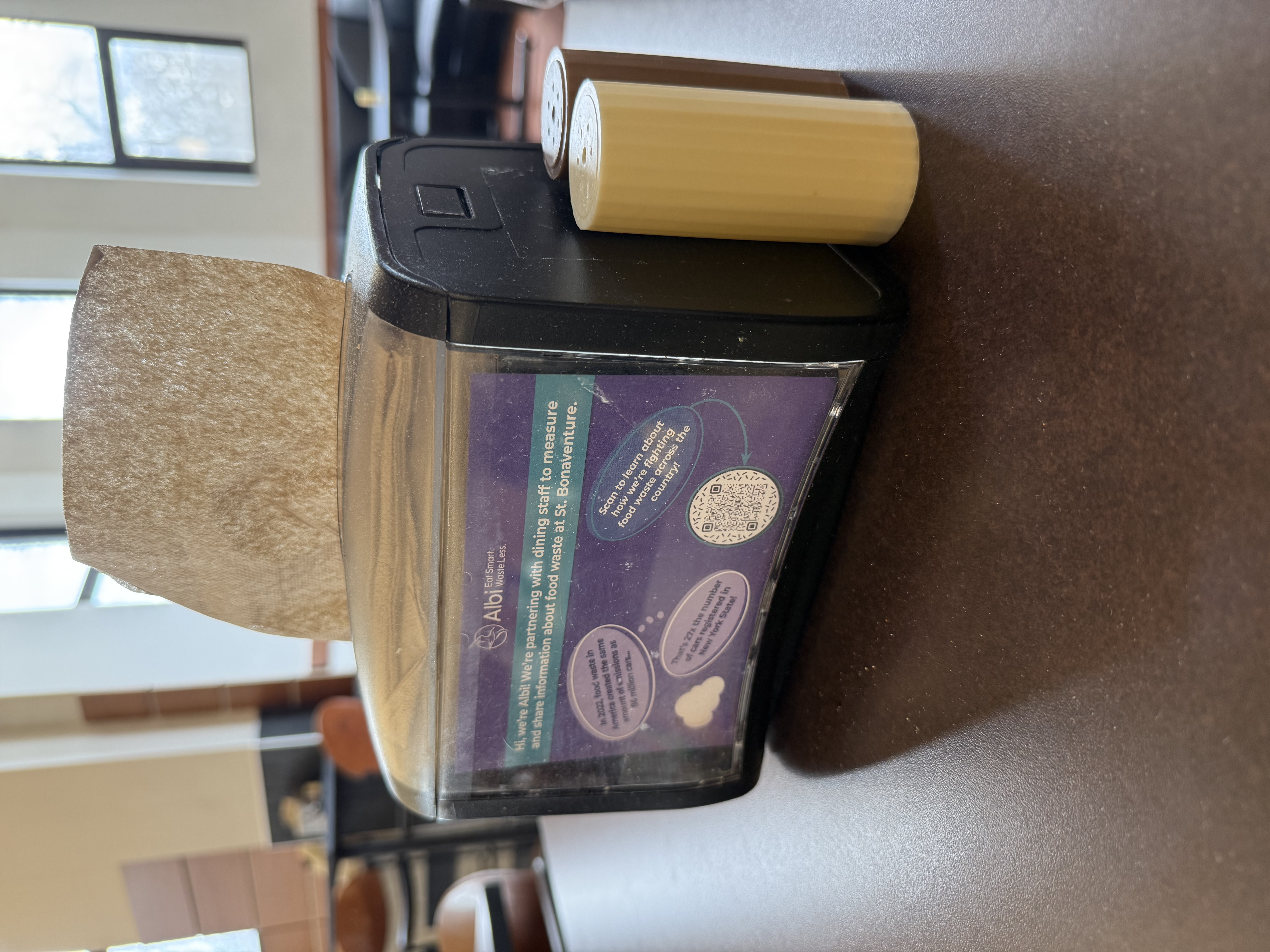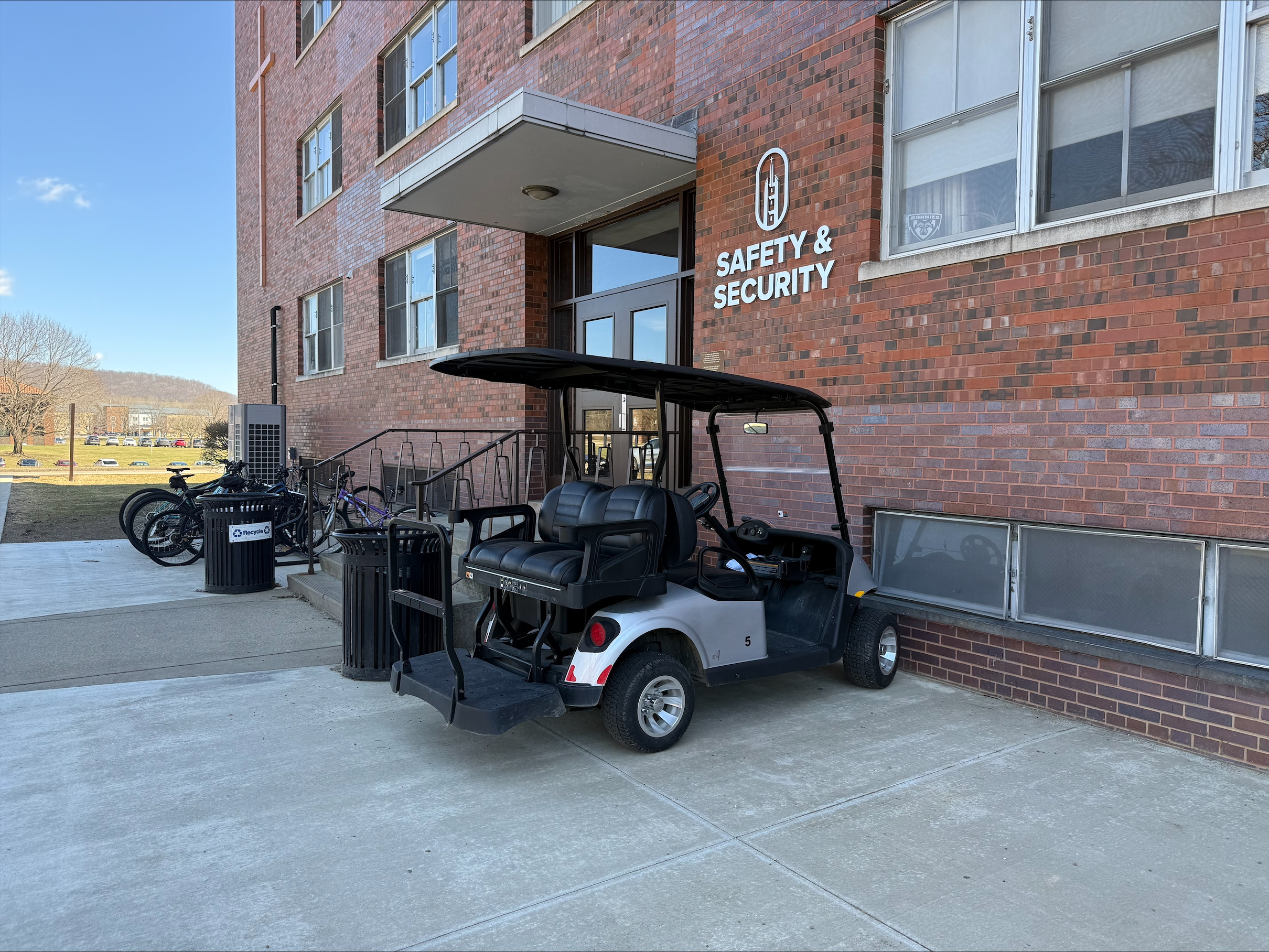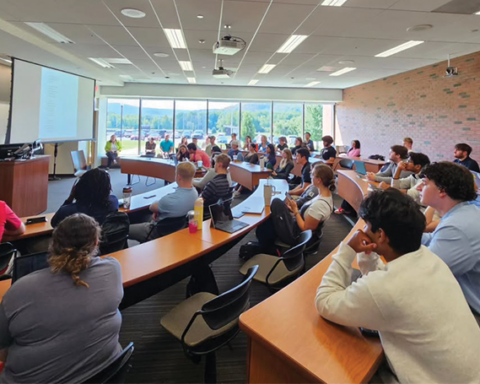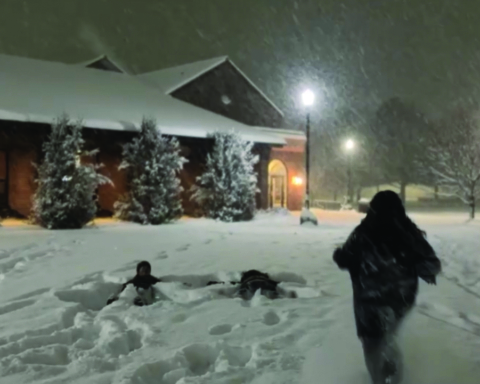Admissions team helps to improve retention rate at Bona’s
Admissions are a critical part of St. Bonaventure University’s operations. The admissions office works all year to bring qualified, capable students to the Bonaventure community.
The admissions process doesn’t start with a student’s application, though. Doug Brady, director of admissions, said that his team interacts with students throughout their college process. He said his team seeks to make the process easier for families.
Once the office of undergraduate admissions gets a student’s application, however, they make decisions that will impact students’ futures. Brady said that St. Bonaventure utilizes a holistic review process when considering prospective students’ applications.
“We’re looking at everything. We’re looking at test scores, we’re looking at transcripts, we’re looking at essays, letters of recommendation. We’re looking at all of those different things,” said Brady. “The most important thing is always going to be the transcript. Data that’s out there suggests that the transcript will be the best indicator of how successful a student will be in college.”
Brady and Bernie Valento, vice president for enrollment, said that once a student is accepted, the admissions team continues to communicate with them and their families, forming personal relationships.
“These students become our family… We want them all to come. That’s how intense we get… We always want them to know there’s a home here if they want it,” said Valento.
Valento said, “I like to say we have certain standards we adhere to. And really, here at St. Bonaventure, we pretty much have adhered to those standards for as long back as we can see.”
The standards Valento referred to were published in 1992. These standards, according to a 1992 Faculty Senate report, include requirements that a student has a final high school average of 80 percent or better, an SAT score of 850 or better and “rank in the top two fifths of the class.” These admissions standards were published before the re-centering of the SAT, but until a new policy was put in place in 2018, those standards were applicable.
George Lapennas, a retired associate professor of biology, has followed the admissions process in the long term. Lapennas has corresponded with the Faculty Senate about the admissions standards set forth by the university.
“The policy that the Senate passed in April 2018 didn’t say anything about when it would go into effect,” said Lapennas. “Without something like that, that became university policy as soon as the president approved it, which would be in February of this year. That’s sort of odd… I wonder if they are treating it as though it became the rule as of the time that the president checked the box.”
The new policy, which passed the Faculty Senate in April 2018, says that, “The normal minimum standard for admission to St. Bonaventure University is a high school GPA of 80 and a combined math and verbal SAT score of 930.”
The policy also offers the admissions team administrative discretion, which means that they can admit students outside of the normal minimum admission requirements in extenuating circumstances.
The admissions team had a history of non-adherence to the 1992 admissions policy. Over a 10-year period, from 2005 to 2015, an average of 15 percent of each admitted class met only one of St. Bonaventure’s admissions requirements. On average, two percent of each admitted class met neither of the admissions requirements. This information came from a 2015 report prepared by Ann Lehman, director of Institutional Research. The report was submitted to Faculty Senate after concern over admissions’ non-compliance to their policies.
The figure of 15 percent is made up of Freshman Foundation admits, students who require more assistance transitioning into college, and “regular” admits. Between one and three percent of regular admits annually fall outside of the normal admission requirements, while 47 to 63 percent of Freshman Foundation admits meet only one of the admissions requirements.
Valento said that the numbers in Lehman’s 2015 report are consistent with the percentage of admitted students who have not met both of the updated requirements since the adoption of the new policy.
“It’s very consistent, almost identical,” said Valento.
Valento said that the entire process of accepting, admitting and enrolling students has been consistent in the past decade.
Each year, the admissions office seeks to enroll 22 to 24 percent of the students accepted to St. Bonaventure, said Valento. That figure is known as a yield rate.
The admitted class of 2018, with a cohort size of 551, represents 24 percent of the students St. Bonaventure accepted last fall. This means that nearly 2,300 students were accepted last fall. Valento said that Bonaventure’s yield rates are strong and consistent.
He said that some of Bonaventure’s competitors have seen lower yield rates, even as Bonaventure continues its consistent record.
“Some of our peers are at 16 to 17 percent,” said Valento.
The students St. Bonaventure admits yearly are consistent as well.
“We’ve been very successful with maintaining, and maybe even slightly improving, our student quality coming in,” said Valento.
The data backs Valento up. In 2009, the average high school GPA for the admitted class was a 3.20. The admitted class of 2018 had an average GPA of 3.35, a .15 point increase from a decade ago.
In addition to improving student quality, the admissions team has managed to improve retention rates, as well. Retention rates represent the percentage of students who choose to continue their education at the same institution they began at. This number is typically calculated between students’ freshman and sophomore years.
A spreadsheet provided by Valento showed that between 2009 and 2017, retention rates increased by six percentage points. In 2009, the freshman to sophomore retention rate was 80 percent.
“86% of the admitted class of 2017 came back,” said Valento.
“The university has made significant progress with its first-year retention,” said Valento.
Brady agreed with him, noting that although admissions does much of the recruitment work, staff and students from all departments are the people who make the retention rate so significant.
Though there is a great deal of data, planning and effort that goes into the admissions process each year, students recall that the admissions process was pleasant and welcoming.
“Everybody was really energetic and excited about this school, more than the other schools I looked at. Making St. Bonaventure home was important to almost everybody on campus, it seemed,” said Logan D’Angelo, a freshman biology major.
By Meghan Hall, News Assignment Editor
hallml18@bonaventure.edu





